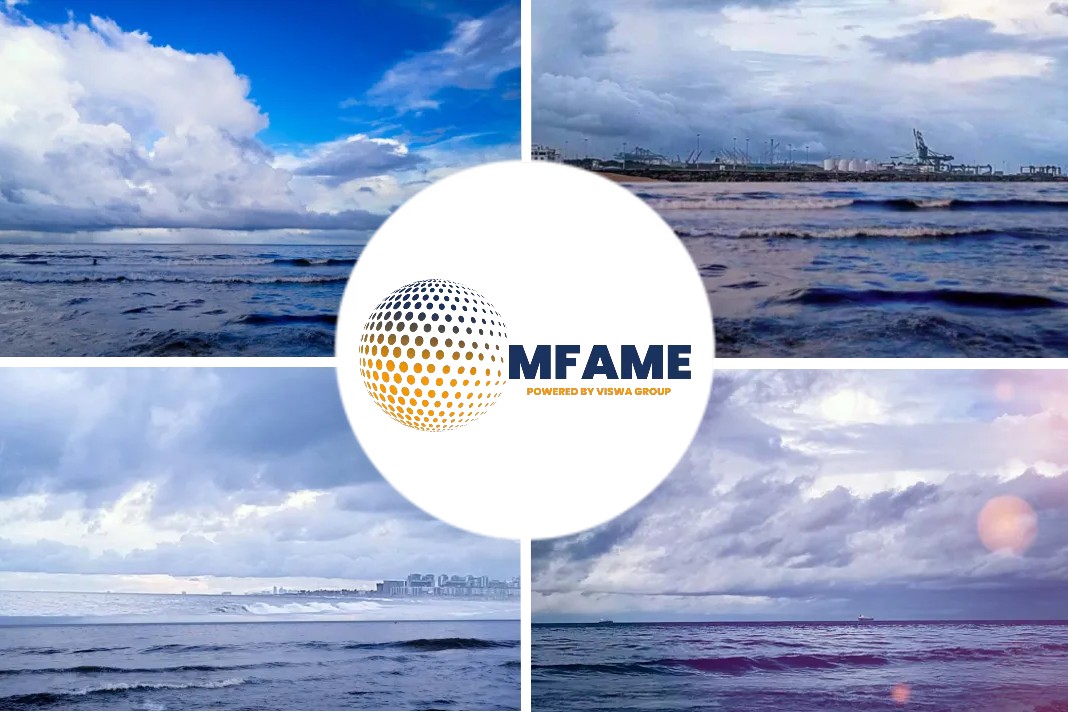A surge in deliveries of mega-ships this year will prolong overcapacity in the container market and hit the north-south liner trades the hardest, according to industry analysts.
Around 78 percent of the 1.69 million twenty-foot-equivalent units of new ships slated for delivery in 2017 will be above 10,000 TEUs, according to Alphaliner.
More than half of deliveries will be ships of 14,000 TEUs or above, says Drewry Shipping Consultants.
Alphaliner says the projected deliveries will be twice as high as its forecast that a record 750,000 TEUs of capacity will be scrapped in 2017.
Even accounting for a potential slippage of around 250,000 TEUs, as some shipowners likely will defer deliveries, the additional capacity will reach 1.44 million TEUs, equivalent to a 3.4 percent net increase in the world fleet.
“The relatively high fleet growth rate, compared to the low 1.5 percent growth rate recorded in 2016, when only 930,000 TEUs were delivered, will prolong the overcapacity and further delay the recovery in the container shipping market.”
That overcapacity has lead to consistently low freight rates that have destroyed container line profitability. This has lead to the wave of consolidation that swept through the industry, and the collapse of Hanjin Shipping. The 2016 financial results are not yet in, but analyst Dynamar said carrier losses for 12 of the top 25 lines up to the end of the third quarter were already $13 billion.
If container lines are unable lift freight rates to sustainable levels in the coming year, more consolidation is likely. This would hurt shippers, as it will result in less competition, with the largest players in the market dictating pricing.
The arrival of new vessels will also add to the pool of idle ships, currently standing at 1.4 million TEUs, Alphaliner says.
Drewry said in a recent webinar that it has a more optimistic outlook for the container market than it has had for a long time as demand will continue to make small, incremental gains and freight rates will rebound after last year’s nadir.
“However, we also identified the biggest risk to that outlook as the huge number of ship deliveries, particularly at the top end of the scale.”
As most of the large vessels will go straight into the Asia-North Europe trade, they will push smaller ships into the “secondary” Asia-Mediterranean, trans-Pacific, and Asia-Mideast routes.
“Then the cascade continues as ships in those routes have to find a new home or potentially be laid up,” Drewry says.
Average vessel sizes have grown faster than demand on most east-west trades except on the westbound trans-Atlantic route. A 22 percent rise in the size of ships on the Asia-US East Coast trade is entirely due to the widening of the Panama Canal last summer “but the disparity with demand growth does not mean that carriers have had to make a trade off by reducing the number of services.”
The north-south trades, which have almost all been hit by weak demand on their headhaul legs, are not in a position to absorb too much additional capacity.
The arrival of Mediterranean Shipping Co’s 13,000-TEU ships on the Asia-West Africa trade helped boost the average deployed tonnage by 16 percent during 2016, yet shipments on the southbound leg were down 11 percent year-on-year by end-November.
On the Asia-east coast South America trades, ship sizes are up 7 percent — a legacy of orders placed when Brazil was a fast-growing market — but demand has slumped by almost 20 percent.
Container lines have done a “reasonable” job in balancing capacity in the east-west trades, with vessel utilization moving “gently” upwards and assisting the recovery in freight rates.
“However, the pain has merely been passed along to the north-south trades where utilization is in decline,” Drewry notes.
“These trades are the victims of the fact there is simply nowhere else to put the cascaded east-west ships and until they recover the demand strength carriers will either have to accept poor returns on freight rates or park more ships.”
For all the talk of a nascent recovery, the industry will only be back on “truly solid” ground when lines do not have to squeeze ships into trades that are not equipped to handle them, the London-based consultancy says.
Did you subscribe for our daily newsletter?
It’s Free! Click here to Subscribe!
Source: JOC


















